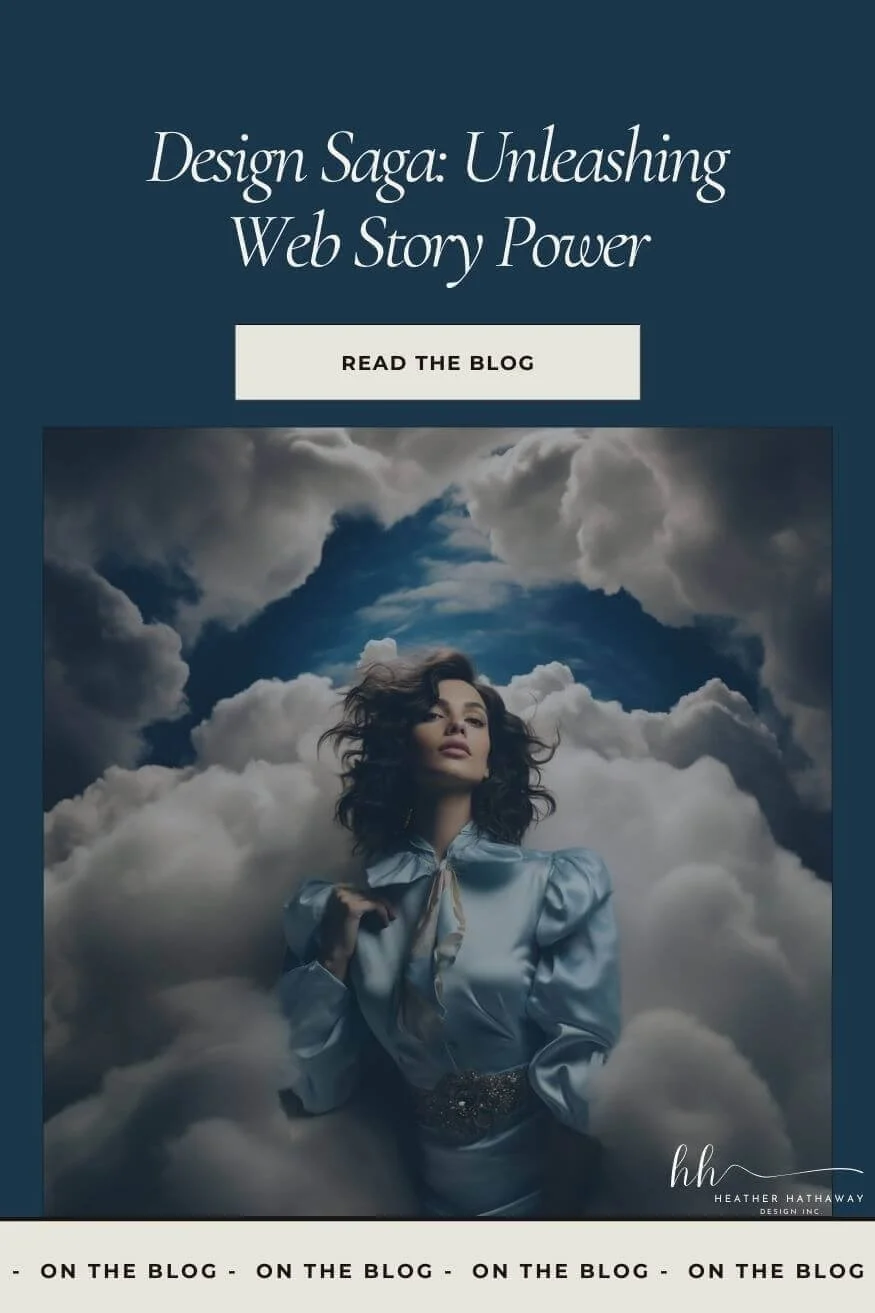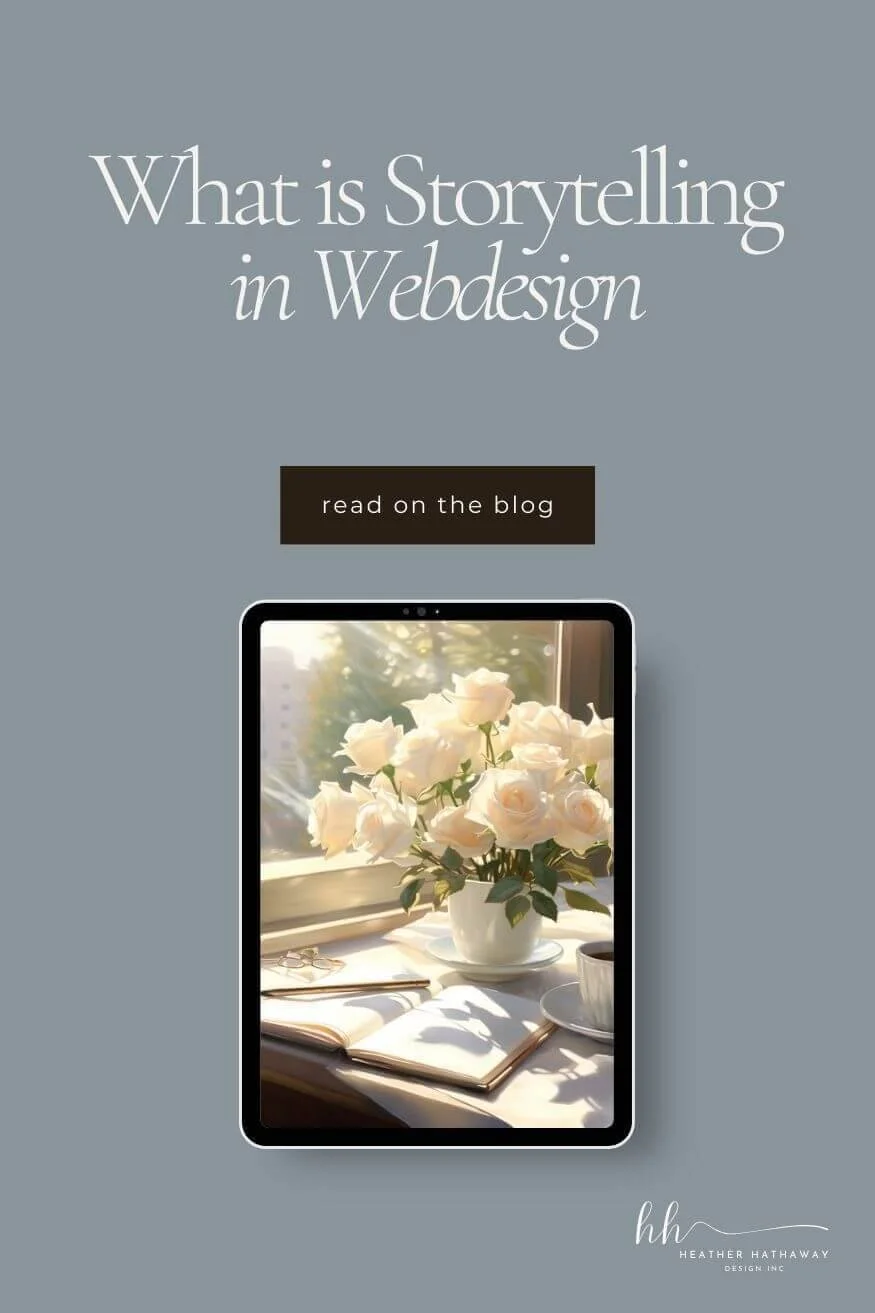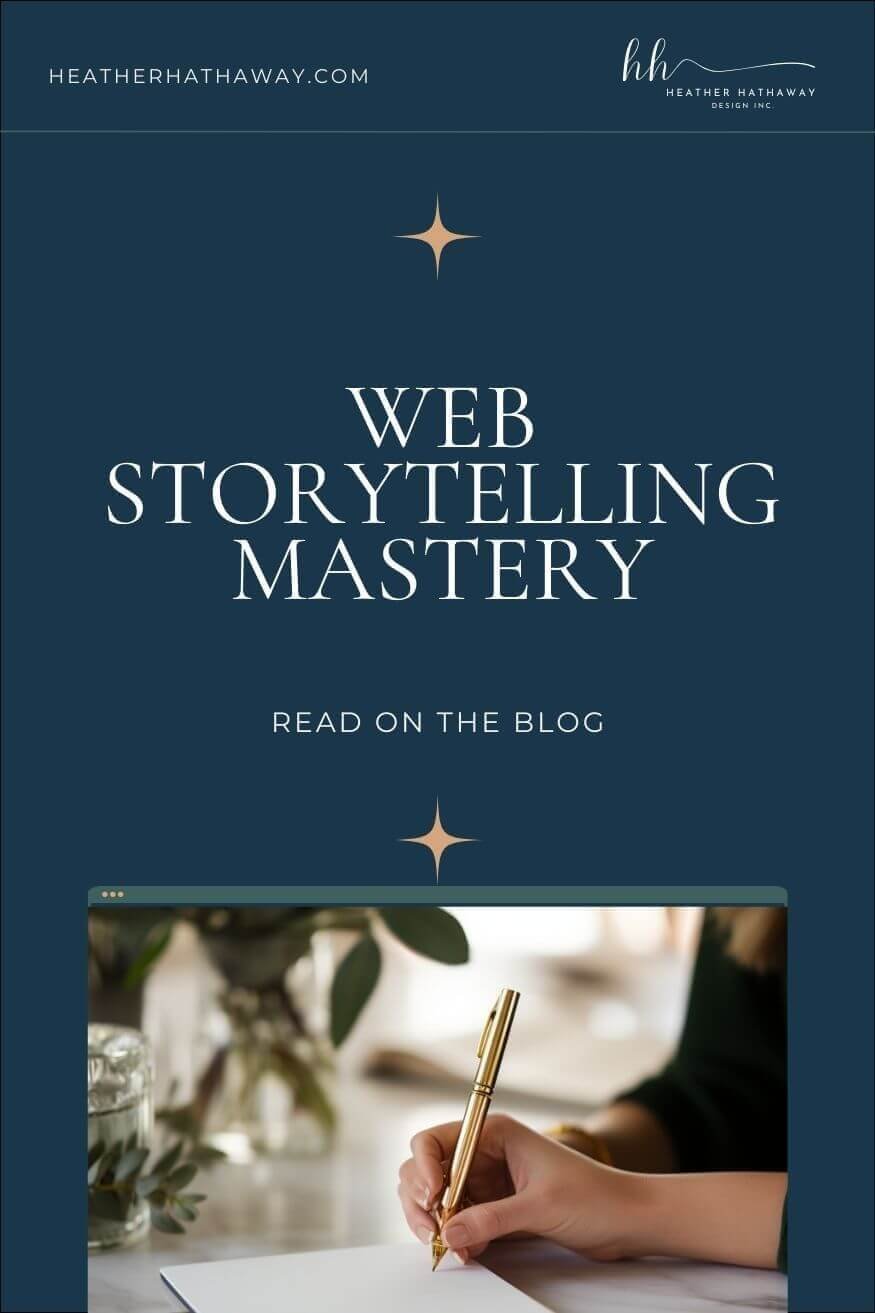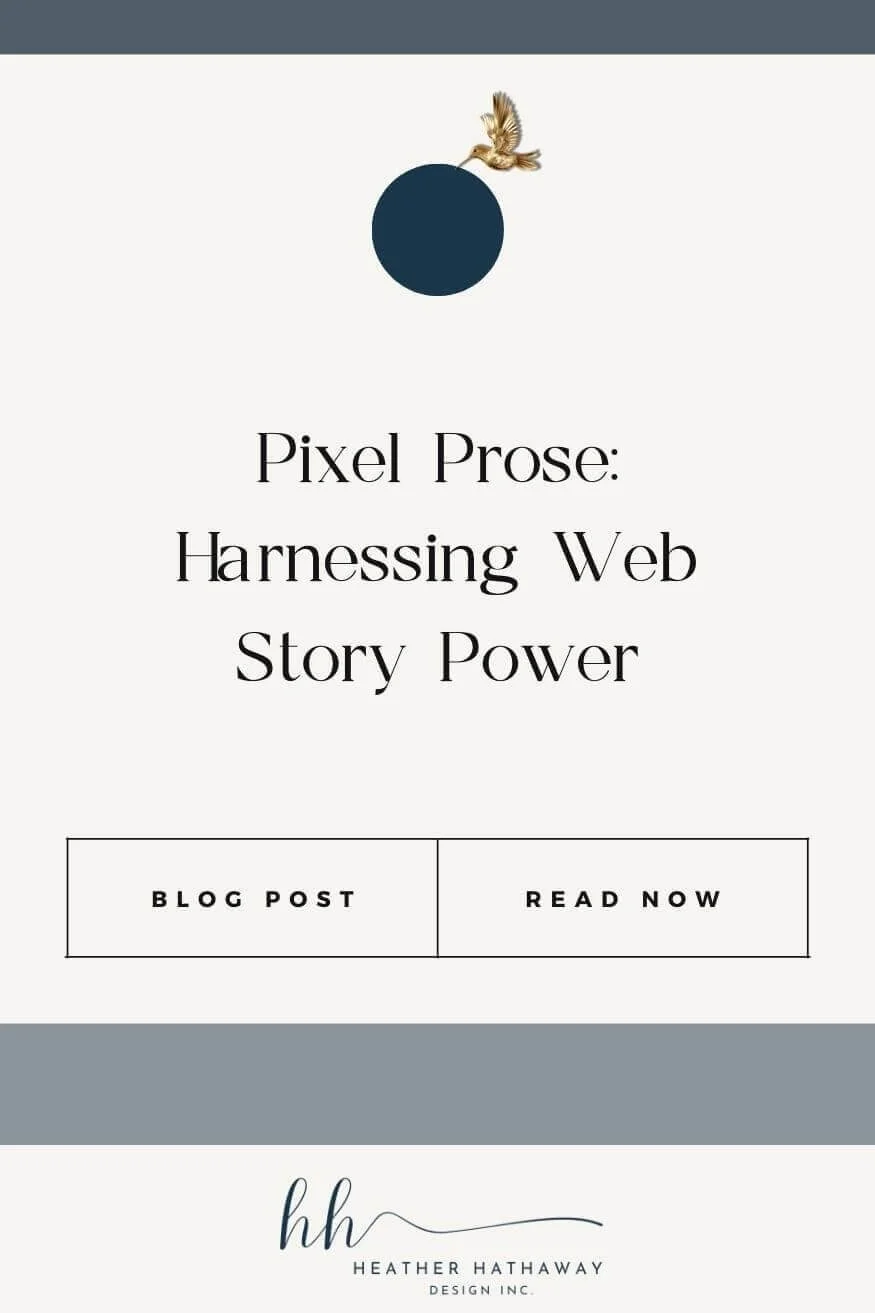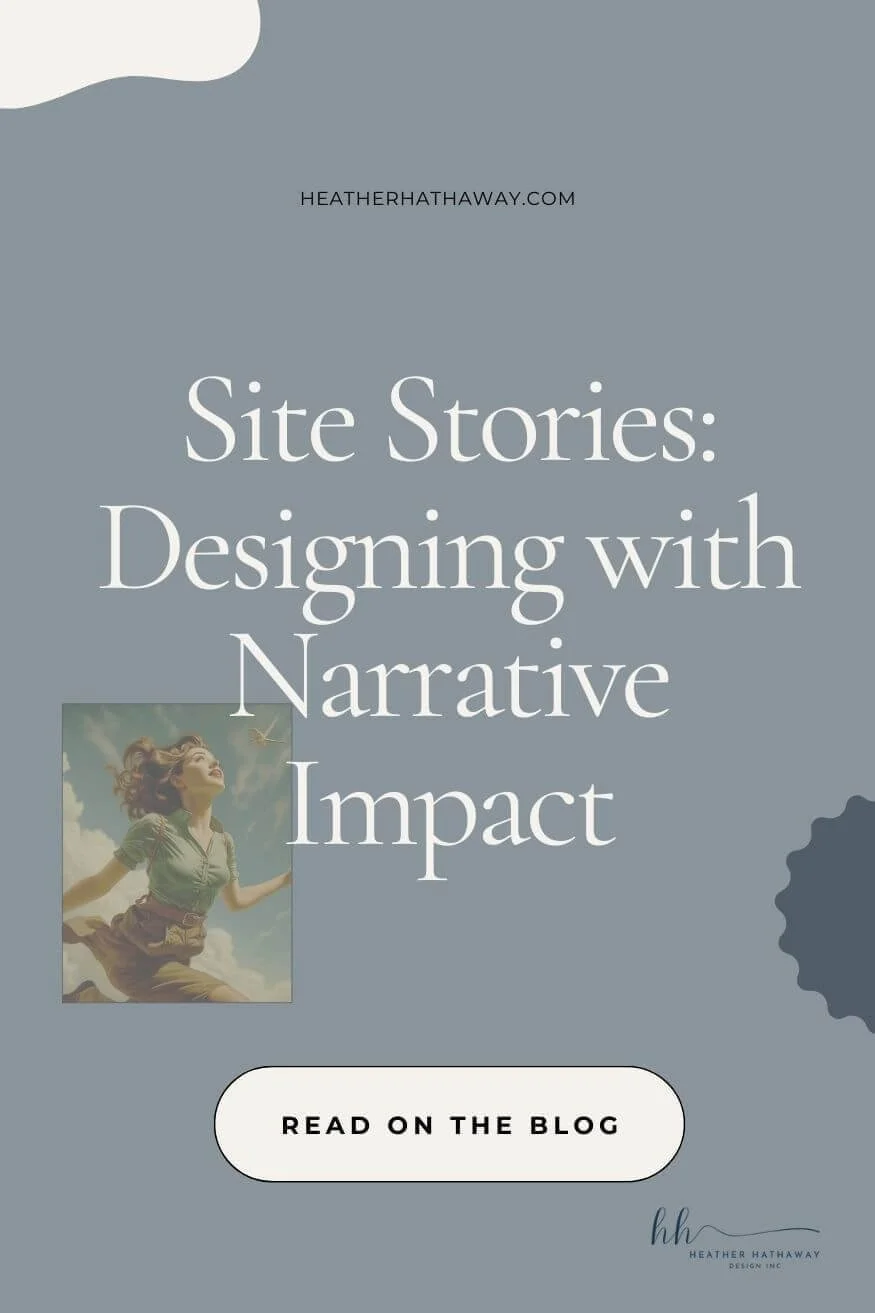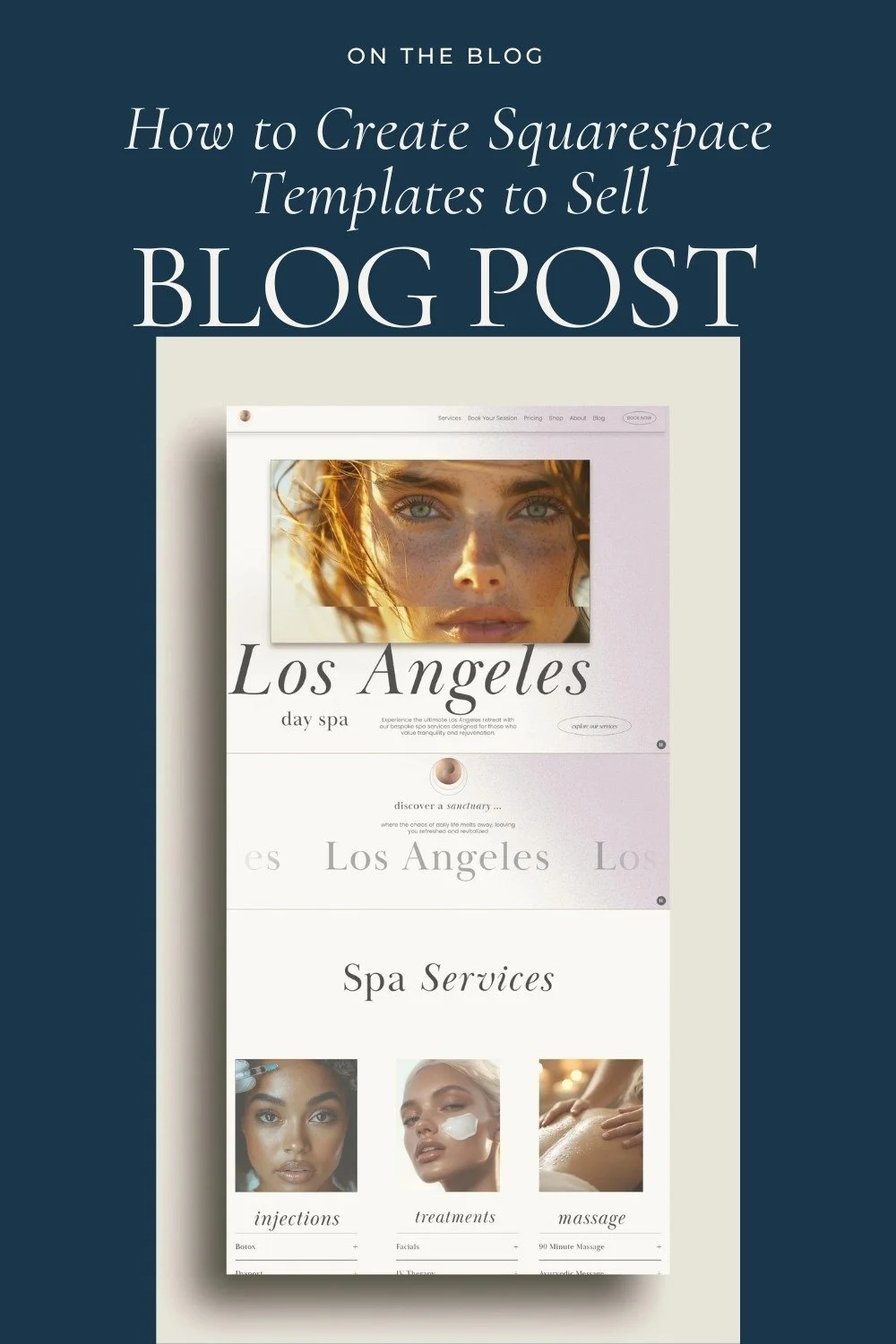The Power of Storytelling in Website Design
Have you ever stumbled upon a website that felt more like a journey than a mere collection of web pages? Chances are, that website was harnessing the power of storytelling in its design. Storytelling isn't just for bedtime tales or blockbuster movies—it's a potent tool that savvy web designers are using to captivate audiences, forge emotional connections, and elevate user experiences.
Why is storytelling all the rage in 2024 for marketing??
I have seen email marketing memberships about this, social posts about it, and influencers talking about it.
Why? Probably because we are so inundated with chatgpt copy now, 2 second tiktok reals, social media, deals, deals, deals, offers, offers, offers, etc etc.
So it got me thinking about storytelling in web design because I was in the middle of making a new website template. I created a fictitious client:
I created their picture in Midjourney, started building the site and I stared at this picture and thought...what is their name, where are they from, what do they do, what do they like, what's their style and vibe...what is their ideal client's problem....and I was like omg, I'm trying to tell their story.
But why is this so important, I wanted to know, really on a deeper level, not just oh story telling is engaging.
So I did some more digging.
I also have a Shopify store so I love what Shopify had to say about storytelling in this awesome blog post.
I then came up with a list for you all to break down how your website should tell a story when your ideal customer lands on your website. Keep reading for all of the goodness!
Introduction to the Power of Storytelling in Web Design
In the digital realm, storytelling in web design goes beyond pretty visuals and catchy slogans. It's about weaving narratives that resonate with visitors, guiding them through an immersive journey that leaves a lasting impression.
But what exactly does storytelling entail in the context of web design, and why is it so important?
What is Storytelling in Web Design?
Storytelling in Web Design for Successful Brands
Storytelling in web design has been a powerful tool for renowned brands to connect with their audience on a deeper level and leave a lasting impression. By crafting compelling narratives through a mix of text, images, videos, and interactive features, these brands have successfully engaged visitors and built strong emotional connections.
Let’s look at some famous examples to get more clarity:
Apple
Apple is a prime example of utilizing storytelling in web design to captivate its audience. With minimalistic yet visually striking designs, Apple's website effectively conveys a sense of innovation and sleek sophistication. By showcasing product features in interactive ways and using crisp imagery, Apple creates a narrative of cutting-edge technology that resonates with its customers.
Nike
Nike is another brand that excels in incorporating storytelling into its web design. Through impactful visuals, videos highlighting athletes' journeys, and empowering message-driven content, Nike's website goes beyond selling products to inspire and connect with its audience on a personal level. By aligning with themes of determination, victory, and self-improvement, Nike fosters a sense of belonging and motivation among its visitors.
Airbnb
Airbnb uniquely leverages storytelling on its website to evoke a sense of wanderlust and adventure. Through user-generated content, personalized recommendations, and immersive media, Airbnb paints a vivid picture of travel experiences and cultural exploration. By inviting visitors to be part of a global community of travelers, Airbnb forges emotional connections and instills a feeling of belonging.
Importance of Storytelling
In an era where attention spans are fleeting and competition is fierce, storytelling sets brands apart by creating authentic connections with their audience.
It's a way to humanize your brand, convey your values, and stand out in a crowded digital landscape.
Understanding the Psychology Behind Storytelling
Emotional Connection
At the heart of storytelling lies the ability to evoke emotions. From laughter to tears, stories have a profound impact on our feelings and perceptions. By tapping into emotions like empathy, excitement, or nostalgia, web designers can create experiences that resonate on a deeper level.
You can refer to this article that is science-based research on how storytelling affects our brains for some fantastic insights!
Engagement and Retention
Humans are hardwired to respond to stories. By presenting information in a narrative format, web designers can capture and maintain the attention of users, leading to higher engagement and longer dwell times on websites.
Incorporating Storytelling Elements in Web Design
Visual storytelling is an essential aspect of modern branding and web design. Incorporating visual elements like images, videos, and infographics can significantly enhance the storytelling experience for your audience.
Here are some specific examples of how you can include these elements on your website:
1. Images: Use high-quality images that resonate with your brand and the message you want to convey. For instance, if you're a company focusing on outdoor activities, you could feature vibrant images of nature or people engaging in adventure sports on your homepage. These visuals help create a connection with your target audience and communicate your brand identity effectively.
2. Videos: Incorporate videos that showcase your products or services in action. For instance, a software company can create demo videos to demonstrate how their products work or customer testimonial videos to build trust with potential clients. Videos can bring your brand to life and provide a more immersive experience for visitors to your website.
3. Infographics: Utilize infographics to present complex information or data in a visually appealing and easy-to-understand format. For example, a financial advisory firm could create an infographic illustrating investment trends or tips for financial planning. Infographics are great for breaking down information into digestible chunks and engaging your audience in a unique way.
Need Help?
Book a free discovery Call to chat about your website dreams!
Narrative Structure
A well-defined narrative structure artfully guides users through a website, ensuring a seamless and immersive experience from the captivating homepage to the detailed product pages.
Every section is thoughtfully crafted to contribute harmoniously to the overarching story, enhancing user engagement and fostering connection.
User Experience Enhancement
Storytelling isn't just about content; it's also about the user experience. The seamless flow of intuitive navigation, coupled with a visually captivating responsive design, creates a cohesive journey for visitors.
Interactive features further elevate the storytelling experience on the website, providing users with the opportunity to actively engage with content and fully immerse themselves in the narrative being presented.
This engagement not only enhances user satisfaction but also creates a more memorable and impactful browsing experience, making the website stand out among competitors.
Benefits of Storytelling in Web Design
Building Brand Identity
Storytelling humanizes brands, giving them a personality and a voice. By sharing their history, values, and mission, companies can forge deeper connections with their audience and differentiate themselves from competitors.
Increasing User Engagement
Engaging stories captivate users' attention and encourage them to explore further. Whether it's a compelling blog post, an interactive timeline, or a video series, storytelling keeps users coming back for more.
Establishing Trust and Credibility
Transparent and authentic storytelling builds trust with users by showcasing a brand's authenticity and integrity. When users feel like they know the story behind the brand, they are more likely to trust its products or services.
Examples of Effective Storytelling Websites
Company Brand Stories
Companies like Airbnb and Coca-Cola excel at storytelling by sharing compelling narratives about their origins, values, and impact on the world.
Product Stories
E-commerce websites like Warby Parker and TOMS use storytelling to highlight the journey of their products, from design inspiration to customer testimonials.
Customer Testimonials
Websites that feature customer testimonials and success stories leverage the power of social proof to build trust and credibility with potential buyers.
Practical Tips for Implementing Storytelling
Know Your Audience
Understanding your target audience's preferences, interests, and pain points is essential for crafting stories that resonate with them on a personal level. By delving deep into their psychographics and behaviors, you can tailor your messages to evoke emotions and drive meaningful connections.
This knowledge serves as a cornerstone for successful branding and marketing strategies, guiding you in delivering content that genuinely speaks to your audience's needs and desires.
Keep it Authentic
Authenticity is fundamental to crafting compelling narratives. It is crucial to steer clear of unnecessary embellishments or hyperboles and instead concentrate on sharing authentic stories that resonate with your brand's core values and real-life encounters.
Use Multimedia Elements
Incorporate a well-balanced mix of multimedia elements such as high-quality images, immersive videos, crisp audio clips, and captivating animations to elevate your storytelling approach and deliver a truly immersive and engaging experience for your audience.
By blending these various dynamic components seamlessly, you can enhance the impact of your content and leave a lasting impression on your visitors.
Overcoming Challenges in Storytelling Web Design
Balancing Story and Information
Finding the delicate balance between crafting a compelling narrative and ensuring the clear delivery of crucial details is no easy task.
It is vital to emphasize both coherence and accessibility while maintaining the seamless progression of the story.
Avoiding Overwhelm
Too much storytelling or visual clutter can overwhelm users and detract from the overall experience. Keep designs clean and streamlined to ensure that the story remains the focal point.
Consistency Across Platforms
Maintaining a consistent storytelling voice and aesthetic across different digital platforms helps reinforce brand identity and ensures a cohesive user experience.
Measuring the Impact of Storytelling
Analyzing Metrics
Track metrics such as bounce rate, time on page, and conversion rate to gauge the effectiveness of storytelling efforts and identify areas for improvement.
Gathering Feedback
Solicit feedback from users through surveys, interviews, or social media to gain insights into how they perceive and engage with your stories.
Iterative Improvement
Use data-driven insights to iteratively refine your storytelling strategy, experimenting with different narratives, formats, and delivery methods to optimize results.
Future Trends in Storytelling Web Design
Personalized Experiences
Advancements in data analytics and AI technologies enable brands to deliver personalized storytelling experiences tailored to individual user preferences and behavior.
Interactive Storytelling
Interactive storytelling techniques such as gamification, quizzes, and choose-your-own-adventure narratives create immersive experiences that actively engage users and encourage participation.
Immersive Technologies
Emerging technologies like virtual reality (VR) and augmented reality (AR) offer new opportunities for immersive storytelling, allowing users to step into the narrative and experience it firsthand.
10 Storytelling Tips for Your Website
Imagine your website is telling a story about your ideal customer, the hero. Ask these questions...
1.Who's the hero and what's their problem? This sets the stage by introducing the character (your customer) and the challenge they face.
2. Grab their attention! A good headline is like a book's blurb - it convinces the hero to listen to your story.
3. Show, don't tell! Images and videos can capture emotions and visually represent the hero's world.
4. Let real people vouch for you. Testimonials are like having the hero's friends tell them how your product or service helped them.
5. What's the happy ending? A clear call to action tells the hero what to do next to solve their problem.
6. Keep it short and sweet. No one wants a longwinded story - get to the point quickly and clearly.
7. Make sure everything fits together. The story should feel like it comes from the same world, just like a movie.
8. Try different ways of telling the story. See what resonates with your audience the most.
9. Ask the hero what they think. Feedback helps you understand if your story is connecting.
10. The story is never finished! Keep improving it based on what works and what doesn't.
Conclusion
In conclusion, storytelling is a powerful tool that can elevate your web design and website to new heights. By tapping into the psychology of narrative, incorporating compelling visuals, and crafting authentic stories, you can create immersive experiences that captivate audiences, build brand loyalty, and drive business success.
Frequently Asked Questions (FAQs)
-
Assess your brand identity, target audience, and marketing goals to determine if storytelling aligns with your objectives. Experiment with storytelling elements on a small scale to gauge audience response.
-
Absolutely! Storytelling can be adapted to suit any industry or business model. Whether you're selling products, services, or ideas, storytelling helps create emotional connections and differentiate your brand from competitors.
-
Visuals such as images, videos, and infographics enhance storytelling by evoking emotions, conveying information quickly, and creating a memorable visual experience for users.text goes here
-
Track metrics such as engagement metrics (time on page, bounce rate), conversion rates, and user feedback to assess the impact of storytelling on your website's performance.
-
While storytelling can be a powerful tool, there are potential risks such as misalignment

